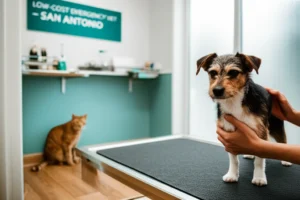You’re here because suddenly, the cost of keeping your furball healthy has shot up, right? Maybe your cat’s been diagnosed with something complicated, or your old dog needs more vet appointments than you ever thought possible. If your wallet feels way too light for another surprise expense, let’s cut through the clutter: the Pet Fund eligibility could be the game-changer you’ve been searching for.
But — and it’s a big “but” — not everything is as simple as, “I need help, so I get it.” You want answers, you don’t want to chase your own tail, and you deserve someone who’s been there (or close to it), talking you through the nitty gritty. Stay with me. Let’s really dive in.
What Makes You Eligible?
If you’re hoping for “everyone gets a handout,” I wish it were that easy. The Pet Fund financial assistance is super focused: it’s there for folks who need help with non-basic, non-urgent veterinary care. Think stuff like chronic conditions, cancer treatment, heart disease, or a big surgery that isn’t an emergency but can’t just be skipped. Simple shots, check-ups, or emergency surgery because of an accident? Sorry, not covered.
Besides the kind of care, you also have to show you’re really in a bind — low-income, limited means, the whole nine yards. The application isn’t just a couple of checkboxes. You’ll need to share a description of your pet’s medical need, proof of your financial situation, and be ready for The Pet Fund team to take a close look at both you and your animal.
The last major thing? You and your pet both need to live in the United States. Sorry, those outside the U.S. — this particular help isn’t available internationally. Want more details on exactly what they cover? There’s a really clear breakdown over on the pet fund application online page — makes the process less daunting, promise.
Who And What Qualifies?
I know this part can feel like a scary maze, so let’s break it into super clear boxes:
| Requirement | Details |
|---|---|
| Type of pet | Domestic companion animal (dog, cat, rabbit, guinea pig, bird, etc.) — no horses, farm animals, or breeder/research animals. |
| Medical condition | Must be for non-basic, non-urgent care (cancer, chronic illness, heart disease, etc.) |
| Prognosis | Vet must state your pet has at least a 50% chance of living for six months or more after treatment. |
| Pet ownership | You must have owned your pet for at least six months (no brand new adoptions, sorry). |
| Financial need | You’ll need to prove real financial difficulty — with proof of income, unemployment/SSI statements, etc. |
| US Resident | Help is only available for applicants and pets in the U.S. |
| Application step | Email before applying; do not send in an application until The Pet Fund staff have told you you’re eligible and placed you on the waitlist. |
See how precise it is? I know it feels restrictive, but the upside is clear: if you do match this, you stand a real chance of help, and not just a bureaucratic runaround. (Sad fact: lots of funds are basically smoke and mirrors. This one’s the real deal — or, if you’re curious, check out the full scoop on is the pet fund legit.)
How Much Help Can You Expect?
No magic wands, no blank checks. The Pet Fund usually offers grants up to $500 (occasionally a bit more) — directly paid to your vet for approved treatments. Yeah, I’ll say that louder: money doesn’t go to you. It goes to the veterinary office treating your pet.
That means you need to have your vet onboard with paperwork, sometimes a quick phone chat with The Pet Fund folks, and be crystal clear on whatever costs you’ll still have to cover yourself. If the treatment is thousands and the grant helps with a piece of it, you’ll need a plan for the rest. Honesty time: most folks end up finding a patchwork of help between grants, vet payment plans, and community resources.
How To Apply (And Not Waste Weeks Guessing)
If you take one thing from here, make it this: don’t rush and hit “apply” right away. The Pet Fund is a little old-school about this — you need to email them first (info@thepetfund.com), describe your pet’s need, and give a number where they can reach you. If you just send off the application without the green light from the staff, they won’t even process it. That’s from the horse’s mouth — or, um, the staff’s.
Here’s your step-by-step game plan for the the pet fund application online route:
- Draft your email: clear, honest, and include your phone number. Don’t write a novel — just the facts.
- Wait for their reply (it might take a little while — they’re volunteers, and there’s almost always a waitlist).
- If you’re invited, get your documents in line: proof of income, recent vet’s estimate and notes, proof of pet ownership.
- Complete the application form they send or direct you to (it’s online, but if you can’t do online things, a library or friend can usually help with printing/faxing).
- Keep your vet in the loop: they may need to speak to The Pet Fund or send records directly.
Patience isn’t fun, I know. But this is one of those times where “waiting your turn” might pay off with real money — and real hope — for your best friend at home.
What If You’re In Crisis Right Now?
Truth bomb: The wait for The Pet Fund can be weeks (sometimes longer). They have hundreds of applications rolling in nonstop. So, if you’re in an emergency — car crash, poisoning, your pet suddenly can’t walk — you need speed, not a waitlist.
In these situations, try:
- Local animal charities and shelters with “urgent care” grants. Programs often help with basics, emergencies, and can act faster.
- Reach out to your vet directly and ask about payment plans, sliding-scale fees, or deferred billing — many clinics will work with you if you’re upfront and honest.
- Crowdsourcing: Sometimes online fundraising (like GoFundMe, where you tell your story and ask friends/community for support) is the fastest patch when you’ve got absolutely nothing else. Fees do eat into donations, so read up on them according to the GoFundMe resources.
- 211 or local United Way resources — sounds random, but sometimes there are “hidden” pet aid programs people overlook.
Not sure where to start? There’s a great resource list on pet assistance for low-income families — you might just find something local that’s faster and easier than expected.
Other Ways To Find Help
Ever heard of the safety net — not the circus kind, but the patchwork that keeps us from falling apart? Even if the Pet Fund eligibility doesn’t match your situation, there’s hope in the form of assorted animal nonprofits, local clinics, and creative funding tricks. Let me toss you a lifeline or two:
- Check local humane societies and rescue groups. Many have “pet retention” programs, especially for low-income and at-risk families.
- Look into the Farley Foundation, PAWS Canada, or the National Pet Care Fund. If you’re in Canada, these programs use local income cutoff tables or crisis standards — the application process is similar, but keep an eye out for regional rules and special requirements (for example, residency or owning your pet for a certain time).
- Ask your vet about subsidies or “compassionate care” funds. Some clinics partner with small charities or have their own funds for long-standing clients in trouble.
- Consider insurance — but keep it real. If your pet’s already sick, insurance won’t help this time, but it’s a solid idea for the future.
A Few Real-Life Scenarios
Why am I such a big believer in actual stories? Because — let’s be honest — nothing cuts through the fog like real experiences. Here are a couple of quick tales drawn from the front lines (names changed, but the worry and relief? 100% real):
Sarah & Max: Sarah’s senior dog started limping and, after lots of back and forth, her vet found a treatable hip issue (but not life-threatening). She emailed The Pet Fund, waited a month, got approval for a grant to cover part of the surgery, and her vet’s office handled payments directly.
Manny’s Challenge: Manny applied for help with emergency stomach surgery — but The Pet Fund said “no” (too urgent for their grant). His vet helped him find a one-time emergency fund and worked out a low monthly payment plan to get the surgery done on time.
These stories say, “Hang in there.” It’s not always a perfect process, but it’s real help — if you ask early and know the steps.
Building Trust: Tips That Matter
Okay, last but absolutely not least — how do you present your need so your application doesn’t get lost in the shuffle?
- Be frank with your financial documents. It feels weird, but honesty really helps.
- Offer a clear, concise vet record. Ask your vet to write a summary with diagnosis, prognosis, and treatment recommendations. The staff is looking for that “50% good outcome” number; don’t make them dig for it.
- Keep communications short and focused. When you first reach out by email, skip long stories and avoid drama — facts move things forward.
- Check in politely if you haven’t heard back after a couple weeks — things do fall through the cracks, but don’t spam them daily.
- If you need help calling, here’s a handy place to start: the pet fund phone number — so you’re not dialing the wrong people for hours (trust me, I’ve done that more than once).
Still worried? Don’t be shy — vets and animal rescue volunteers are often happy to help you make sense of the paperwork. If you know anyone who’s applied before, ask them for their “hard-learned tips.” It makes a world of difference.
Weighing The Benefits & Risks (Let’s Be Real–Not Just Cheerleaders)
Of course, there are upsides and downsides to the Pet Fund financial assistance — and you need the full story, not just sunshine and rainbows.
- Benefits: Real money for real medical costs; supportive staff; an approach that actually listens, not just “computer says no.”
- Risks or downsides: Long waits, rigid rules, not for emergencies, and sometimes you’ll only get part of the total cost. That means backup plans — vet payment plans, fundraising, and community help — are essential.
- Gray area: If you fall just outside the “strict eligibility,” you might have luck with partner programs or get tips for next steps from The Pet Fund volunteers.
And hey, if you’ve got a unique story, I truly want to hear it! Maybe you’ll end up helping someone else figure out how to get through a tough patch.
The Bottom Line: You’re Not Alone
Being the human to a sick or injured pet is one of the hardest, most gut-twisting things out there — especially if money is tight. Here’s what matters: the Pet Fund eligibility is strict, but for the folks who match, it really, truly is a lifeline. Don’t give up at the first “no.” Fetch your documents, work with your vet, send that first email, and try all the options you can — inside and outside the fund.
If you’re not eligible, don’t lose hope. Other programs, like pet assistance for low-income families and vet-based aid, really do come through in a pinch. The real trick? Start early, keep asking, and treat helpers like partners in your journey, not bureaucratic obstacles.
Did you get through a rough spot with a pet fund, local charity, or just the world’s most patient vet? Want to swap advice or maybe need encouragement for writing your own application email? I’m all ears! Share your story, throw out a question, or drop your best tip for someone else — you just might be the hero for another worried pet parent out there.










